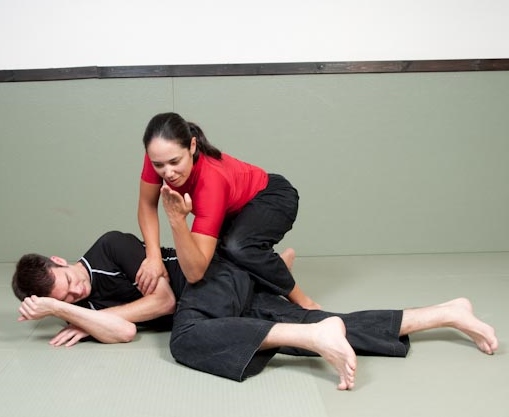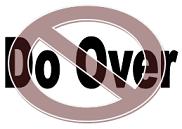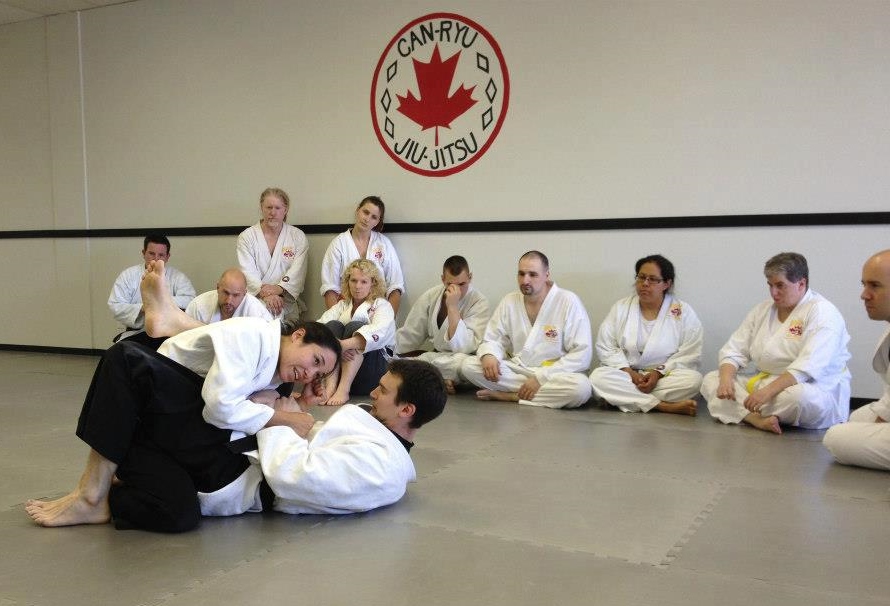Book Review: Self-Defense Tips Everyone Should Know

Self-Defense Tips Everyone Should Know by Neil Martin is the compilation of the views and thoughts of Neil Martin, a martial artist and doorman. I think the title is actually a little misleading, to the book’s detriment. The content is so much greater than that.
I said in a previous review, self-defense oriented books tend to go either with the physical aspects of training, or focus more on teaching avoidance, awareness, and de-escalation tactics. This e-book is an exception, not falling into either of these categories.
This book isn’t a list of tips for self-defense, but more of a compilation of the author’s blog into a single coherent methodology for how to approach developing a full self-defense strategy and mindset.
Unlike most books I review, I ended up reading it through twice, as I received a draft version of the book originally, so in order to give it a fair shake, I read it again and I’m glad I did. (more…)
How to Move Past Excuses and Start Living the Life You Choose
 Want to get more exercise? Eat healthier? Learn a new skill? Write a book? Get a better job? Start a business? Travel to a India? Cut back on booze? Quit smoking? For every personal goal there is a litany of excuses:
Want to get more exercise? Eat healthier? Learn a new skill? Write a book? Get a better job? Start a business? Travel to a India? Cut back on booze? Quit smoking? For every personal goal there is a litany of excuses:
“I’m too busy.”
“I can’t afford it.”
“I have family and/or career commitments.”
“I’m too old/too young.”
“I’m just too —-. It’s just the way I am.”
“It’s just too hard.”
“I’m not strong/capable/disciplined enough.”
These are the tales of woe we tell when we aren’t doing the things we say we want to do. They are stories. Every one has a story, but every story has different angles. There is one simple solution to living life as a victim of circumstance. (more…)
Finding the Opportunity in Each Crisis in the Martial Arts
 A couple of weeks ago I had my students working on quick wrist escapes in class. The goal is to slip out of wrist grips by engaging their bodies from the hips then directing their trapped wrist through the weakest part of the grip. The action I was teaching is used against a wrist grab from the front in which the thumb is at the top of the grip.
A couple of weeks ago I had my students working on quick wrist escapes in class. The goal is to slip out of wrist grips by engaging their bodies from the hips then directing their trapped wrist through the weakest part of the grip. The action I was teaching is used against a wrist grab from the front in which the thumb is at the top of the grip.
While the students were training, Chris, the other instructor assisting on the mats came over and asked me to grab his wrist so he could practice it a few times himself. After he got to do it a few times, he went and grabbed my left wrist, but grabbed with the thumb down rather than up. As I initiate the action of the technique, I realized the grip was different mid-movement as I met the force of the strong part of the grip rather than the thumb and forefingers that would usually result in a quick escape. As I sensed the resistance, I reached under his wrist, clasped my hands together, then reversed my hip turning into him, putting him in a type of wrist lock using his fingers to apply the pressure. (more…)
5 Defining Characteristics of a Confident Martial Arts Instructor
 When students start to adopt leadership roles in their martial arts school, they often worry about whether or not people will take them seriously, unsure of how to carry themselves in such a way as to engender respect and trust. They naturally look to their instructors’ examples to learn how to carry themselves as an instructor. For many, this is a mistake. I’m not suggesting that instructors can’t be helpful as a role model, but they shouldn’t simply look at their teaching style and the way they address students for modelling. Instead, they should be looking at the spirit behind a confident instructor’s actions.
When students start to adopt leadership roles in their martial arts school, they often worry about whether or not people will take them seriously, unsure of how to carry themselves in such a way as to engender respect and trust. They naturally look to their instructors’ examples to learn how to carry themselves as an instructor. For many, this is a mistake. I’m not suggesting that instructors can’t be helpful as a role model, but they shouldn’t simply look at their teaching style and the way they address students for modelling. Instead, they should be looking at the spirit behind a confident instructor’s actions.
Behind every truly confident martial arts instructor, there are a number of characteristics that define them that go beyond the mechanics of how they run a class. Below are 5 that I’ve noted in the many excellent instructors from whom I’ve had the pleasure of learning. (more…)
Focusing on Advantage & Opportunity Over Weakness & Liability
Smaller statured men and women often encounter many challenges in the martial arts related to their smaller strength, weight, height and reach. More often than not, they frustratedly struggle against their limitations, which frequently leads to their giving up early on in their career. Or if they stick with it, they sometimes settle for less with themselves, accepting that there are some things they will simply never be able to do well in the martial arts. This is what happens when you focus on your weaknesses and the liabilities they present. Over the past 20 years of training as a smaller statured woman, I’ve learned that the best way to compensate for so-called liabilities is to focus on developing my personal strengths and the unique opportunities they present. (more…)
Why Arrests Appear So Violent
If you want to watch videos of police purportedly assaulting someone in the pursuit of an arrest, it will only take you seconds to find them online. It doesn’t matter that they often lack context, only include the part the videographer wants you to see, or actually depict legitimate police/security brutality, the fact is arrests often look overly brutal to people who don’t know what they’re watching. (more…)
The Overload Principle As Applied to Nerve Motor & Pressure Points
 Our style of Can-ryu Jiu-jitsu was created incorporating the PolicePressure Points System, a set of nerve motor and pressure points specifically chosen by Professor Georges Sylvain (our style’s founder) for their ease of use and effectiveness for law enforcement. There are a number principles that are taught related to their use to make the system’s application more effective. One of these is the “overload principle.” (more…)
Our style of Can-ryu Jiu-jitsu was created incorporating the PolicePressure Points System, a set of nerve motor and pressure points specifically chosen by Professor Georges Sylvain (our style’s founder) for their ease of use and effectiveness for law enforcement. There are a number principles that are taught related to their use to make the system’s application more effective. One of these is the “overload principle.” (more…)
My Approach to Teaching Martial Arts Seminars
Martial arts seminars have unique characteristics that differentiate them from standard ongoing classes in a school or club atmosphere. They are usually not your own students who will benefit from building on the knowledge base you offer over time. They may not even be from the same style as you, or even the same martial art. As such, I take a different approach to teaching them so that students make the most of the experience.
Home Strength Training Workouts for Martial Artists
As a complement to my martial arts training, I like to do cardio and strength training workouts at home to break up the writing work I do at my desk during the day. I run 3x a week, sometimes with sprint intervals, sometimes wihtout, but usually I do one 5k, one 8k and one 10k each week. As for strength training, I have two full-body workouts, one with a stronger emphasis on upper body and one with a stronger emphasis on lower body. These are workouts that only require a kettlebell (I use a 20lb one), some hand weights, a bench or small table, and a mat or carpeted area. Here is my home workout area in my basement:
No Do-overs: The Benefits of Training through Your Mistakes
 Having taught martial arts for nearly two decades, you come to notice certain learning habits people have that come from societal influences. For example, in Western society, people have don’t feel comfortable “failing” at something. When they attempt to do something, they want to do it as close to perfection as possible, which influences the way they practice a skill.
Having taught martial arts for nearly two decades, you come to notice certain learning habits people have that come from societal influences. For example, in Western society, people have don’t feel comfortable “failing” at something. When they attempt to do something, they want to do it as close to perfection as possible, which influences the way they practice a skill.
In Jiu-jitsu, some will start a technique then stop half-way through as they realize they’re not getting it quite right. If I let the student keep doing this, it would be entirely possible to see that student stop and re-start a technique over and and over without actually getting through it once before the class is called to see the next technique. Another way the unwillingness to fail can manifest is when a student either asks lots of detailed questions, or spends a lot of time talking about it, analyzing how it’s supposed to work, etc. These types will spend so much more time talking about it, fooling themselves into thinking that simply talking about it will make them better at it, that they don’t spend as much time practicing it. These types strategies for avoiding looking foolish or “failing” at a technique can hurt one’s mentality towards self-defense, as well as one’s development as a martial artist. (more…)



 We're proud to announce that Lori O'Connell Sensei's new book, When the Fight Goes to the Ground: Jiu-jitsu Strategies & Tactics for Self-Defense, published through international martial arts publisher Tuttle Publishing, is now available in major book stores and online. More about it & where to buy it.
We're proud to announce that Lori O'Connell Sensei's new book, When the Fight Goes to the Ground: Jiu-jitsu Strategies & Tactics for Self-Defense, published through international martial arts publisher Tuttle Publishing, is now available in major book stores and online. More about it & where to buy it.